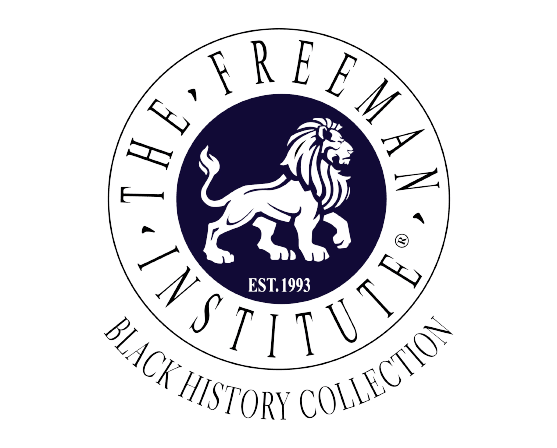
Troy Conference Missionary Society Certificate

An antique framed engraving. It is of a membership certification to the Troy Conference Missionary Society, an auxiliary to the Missionary Society of the Methodist Episcopal Church. It is dated June 21st 1852. Signed by Edmund S. Jones (local pastor of State Street Church in Troy, 1852), President and Stephen. D. Brown (entered Troy Conference in 1837, transferred to the NY Conference in 1865, died in 1875), Secretary. The print depicts a trumpeting angel hovering above a congregation of African American slaves and Native Americans. The annual Troy Conference event (7 days) was held that year in Plattsburgh, NY. This life membership certificate is for Mrs. Sophia Jones, stating that she paid ten dollars. The top of the certificate shows some white spotting. The top left corner is clipped and there is a 1 x 4 inch water stain at the bottom. Measures 19 1/2 x 23 1/2 inches. Very nice antique frame is probably original to the piece. Some pastors of the Troy Conference were noted abolitionists (Don Papson and Andrew Witherspoon). George S. Brown (1801-1880) was an African American missionary to Liberia six times. A part of the Troy Conference, he founded Sandford's Ridge UM Church and was a much-sought-after stone mason in the region.
108. An extremely scarce first edition (1730) copy of "An Historical Account of the Incorporated Society for the Propagation of the Gospel in Foreign Parts. Containing their Foundation, Proceedings, and the Success of their Missionaries in the British Colonies, to the Year 1728," by David Humphreys. Issued London, 1730 by Joseph Downing. pp. 356, retaining blank endpapers. Period full leather binding, raised bands, gilt devices in compartments. Fascinating, unique and very rare early 18th century survey of religion on the British colonies. Includes chapters regarding South Carolina, North Carolina, Pennsylvania, New York, New Jersey, New England, "the Negroe Slaves", the Iroquois Indians, etc. Includes ornate engraved head & tail pieces scattered throughout. In Good+, mostly clean condition. Boards detached, crudely repaired with binding tape, boards rubbed and scuffed, leather dried and cracked in spots, some light scattered foxing & soiling throughout the text block. Otherwise internally and overall the volume remains tight, sound and fairly well-preserved. De-accessioned from an institution with bookplate, perforated stamp to title page. Measures 5" W x 8" H. A rare early 18th century book directly discussing the inhabitants of the east coast of America at this early date.
BACKGROUND: The Society for the Propagation of the Gospel (SPG) was founded by royal charter in 1701, the oldest and indeed the only mission agency formally established by the Church of England, approved by Convocation, approved and supported by Parliament, its charter giving all diocesan bishops ex officio membership and requiring that it report itself annually to the lord chancellor. While the archbishop of Canterbury and the English, Irish, and Welsh bishops have been closely involved in the society's work through most of its first three centuries, the guiding personality in its foundation was Thomas Bray, a parish priest and the bishop of London's commissary for Maryland. Two years previously, in 1699, he was instrumental in setting up a less formally constituted Society for Promoting Christian Knowledge (SPCK), largely concerned with providing education, books, and libraries for English and American parishes. SPG's concern was with recruiting and sending missionaries, clergy, and schoolteachers, and with the associated funding. A problem relating particularly to the eighteenth-century part of the history arises from an evangelical missiography that seems to be obliged to say that nothing of significance happened before William Carey dawned upon the British mission scene at the end of the eighteenth century, and that SPG must therefore have been merely some sort of colonial-church society. Several misconceptions, theological as well as historical, are wrapped up in this notion. Suffice it to say by way of example that the precise records preserved in the SPG missionaries' twice yearly returns, the Notitia parochialis, make it clear that as many nonwhites, Native Americans, and Negro slaves were brought to Christian faith in the early eighteenth century through the SPG's mission to North America as were reported a century later by the many evangelical missions from Britain. At the same time, the work undertaken among the colonists, laying the foundations of the Episcopal Church of the U.S.A., was certainly seen as a missionary endeavor, what we would now call re-evangelization. Hence, the title "Three Centuries of Mission," not "a century building a colonial church followed by two of mission." It is a complex story, both as the domestic context and constitution of the society changed and as missionary ambitions expanded within and beyond British colonial and imperial regions, and later, during and after decolonization. The first historical account was published in 1730, written by the secretary at that time, David Humphreys, and covering the first three decades, in the Caribbean in a small way, but chiefly in North America among native Americans, African slaves, and settlers, and hopeful that the "mighty English Empire ... should be Christian."
-- -- Interesting, scarce book: "Two Hundred Years of the S.P.G.: An Historical Account of the Society for the Propagation of the Gospel in Foreign Parts, 1701-1900 (Based on a Digest of the Society's Records)." By C. F. Pascoe. Published in London by the Society for the Propagation of the Gospel in 1901. 1429 indexed pages. Illustrated with a fold-out chart, some b&w photos. Front and interior hinges split, probably re-glued, delicate. Gilt on front cover strong. Fraying at spine ends, cover tips. Library number on spine. Rear exterior hinge starting to split in a couple of spots. Front end papers missing. Older personal library plate on front pastedown. Fold-out chart has protruded on top edge, resulting in some tattering along that edge. One page adjacent to the fold-out partially pulled from binding.
Send a Message
Contact Us
Office location
Gambrills, MarylandGive us a call
(410) 991-9718Send us an email
[email protected]Other website
freemaninstitute.com/Collectmain.htm